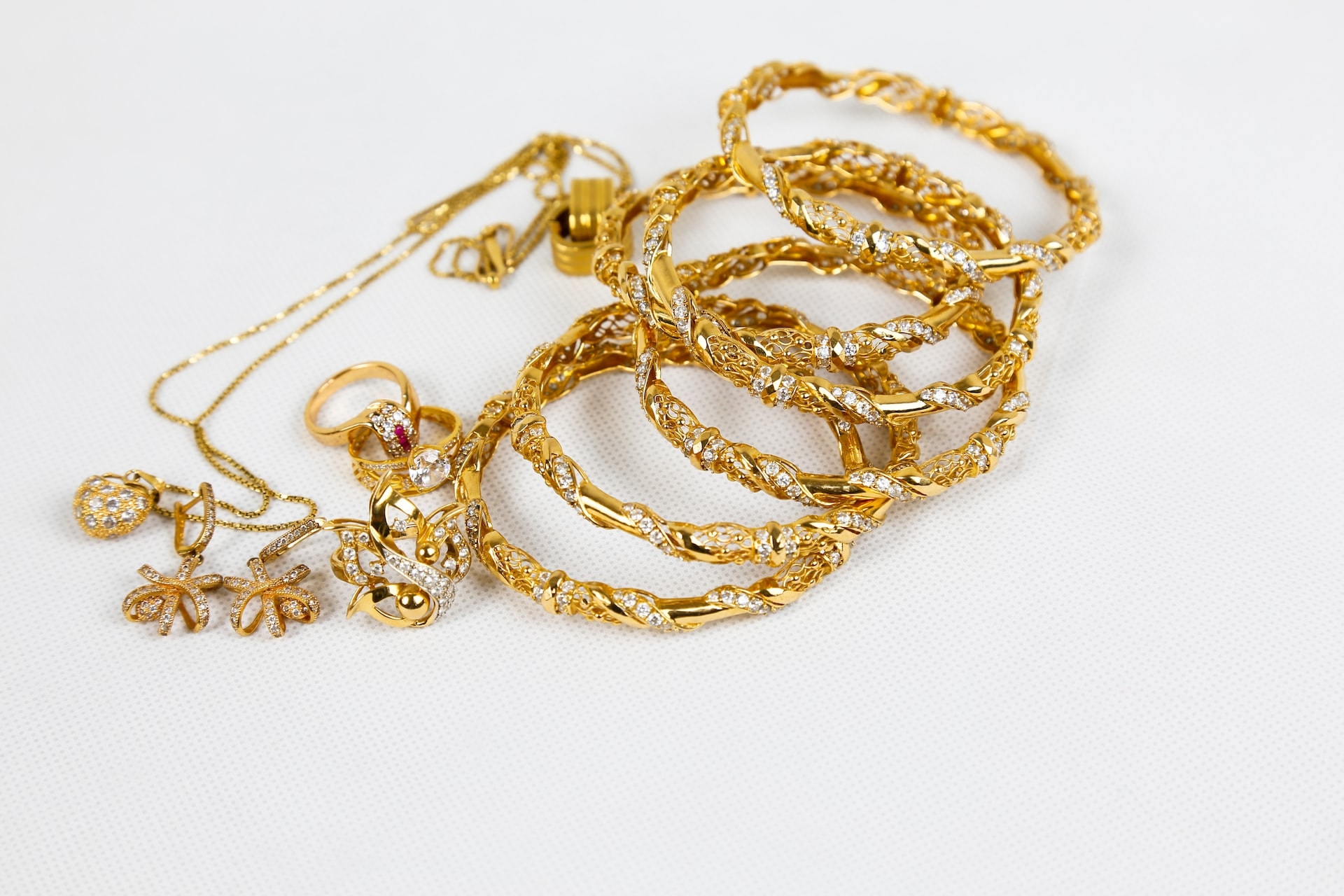
Table of Contents
Gold is and likely always will be the most iconic precious metal used in jewelry. It’s also quite expensive for many people’s budgets, unfortunately, which is why there are many different types of gold alloys and jewelry coatings meant to achieve the look of pure gold but at a lower price.
Enter gold-plated and gold-filled jewelry.
These two types of gold coatings are easy to confuse with one another if you’re new to this niche, but they are actually different in some very significant ways. They’re also very common, so you’re bound to come across these gold alternatives when searching for jewelry.
So, while it’s easy to be dismissive of both because they are not “real gold”, it’s a good idea to look into the several key differences between gold-plated vs. gold-filled jewelry.
What Is Gold Plated Jewelry?
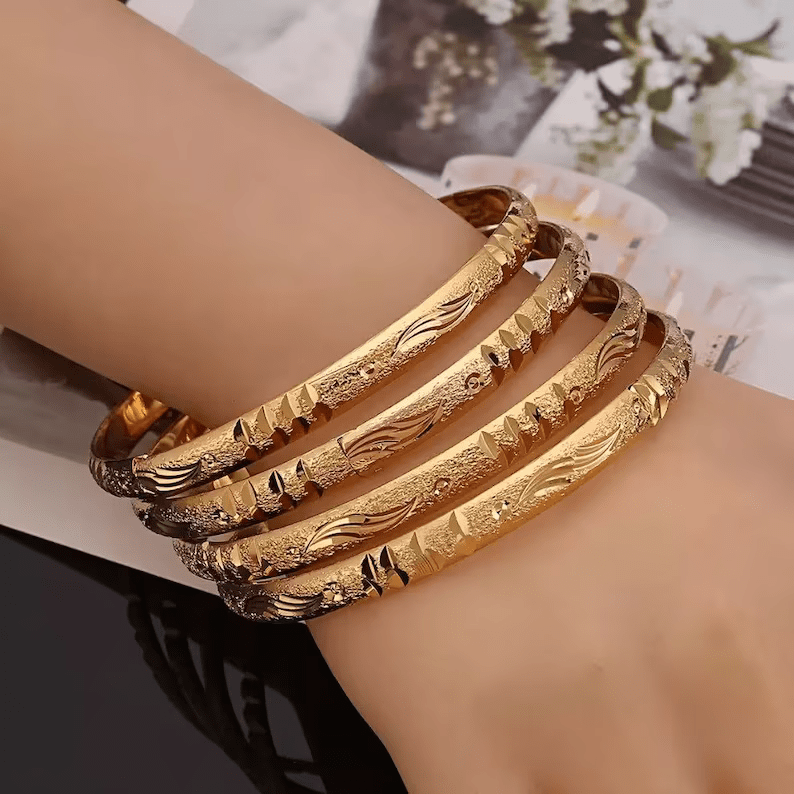
Gold-plated jewelry is exactly what most people imagine when they hear about any type of gold plating or coating. It’s jewelry made out of a non-gold metal, usually jeweler’s brass, a copper and zinc alloy called “Alloy C225” with a very thin layer of gold on top of it.
The method used for this is called electroplating – the base metal is dipped in a vat of electrolyte solution with loose and positively-charged gold ions floating in it. Then, with the help of an electrical current applied to the solution, these positive ions get attracted to the negatively charged base metal and start to form a layer of plating over it.
The whole process can take anywhere between half a day and several days, depending on how exactly it’s performed. But the end result is that the jeweler’s brass gets covered with a very thin layer of gold – typically about 0.175 microns or 7 millionths of an inch.
This means that when you buy gold-plated jewelry, you’re essentially buying a piece made out of 99.95% brass and 0.05% gold. The 0.05% is just on the surface.
Is Vermeil also Gold Plate?
Another type of gold-plated jewelry we ought to mention is vermeil. This type is usually mentioned separately but there really are only two differences between vermeil and a piece of standard gold-plated brass jewelry:
- Vermeil is made with a sterling silver base rather than brass. This makes it more valuable (and expensive) but both brass and sterling silver can start to tarnish (and turn green) once the gold plating wears off.
- The gold plating of vermeil is also thicker than that of standard gold-plated brass – usually 2.5 microns or 1/10,000 of an inch. That’s quite a bit more gold compared to gold-plated brass, technically, but it’s still an incredibly small amount overall.
By any measure, vermeil is a better option than normal gold-plated brass jewelry. However, it’s difficult to see it as a significantly or decisively better option as both gold-plated brass and vermeil can lose their surface gold layer pretty quickly with regular wear. So, while we’ll mostly be talking about the traditional type of gold-plated jewelry before, everything we’ll say about it applies to vermeil too, just to a slightly lesser degree.
Pros And Cons of Gold Plated Jewelry
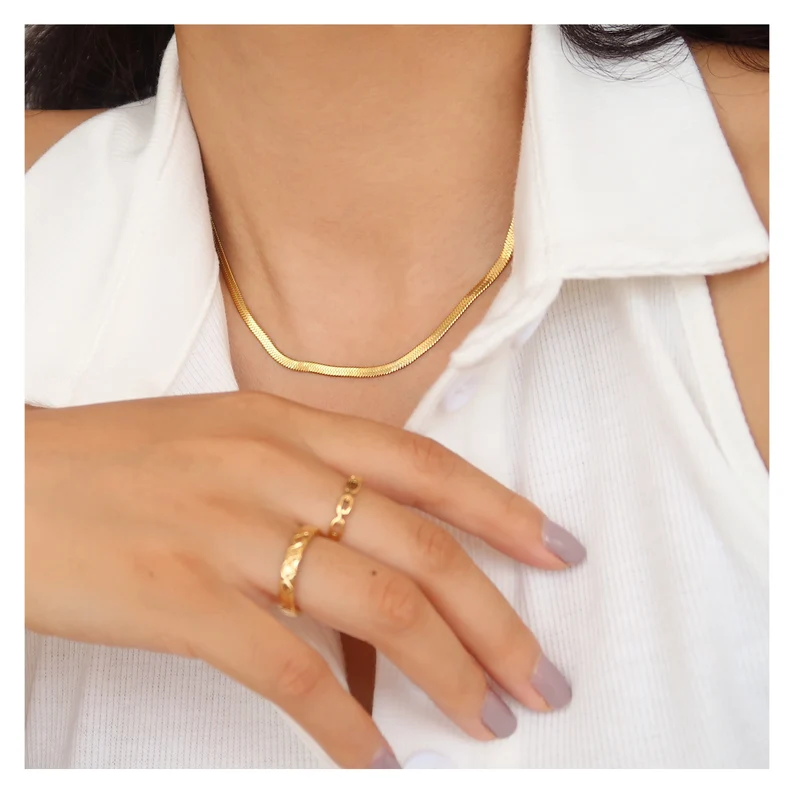
With all of the above being said, let’s detail the exact pros and cons of gold-plated jewelry you’d want to keep in mind:
Pros:
- This is the most affordable option for “gold” jewelry
- The electroplating process can be done at home too if you’ve got the right supplies and know-how
- This simplest choice for display-only jewelry
Cons:
- The gold plating just doesn’t last long and can get damaged or scratched off after wearing the jewelry even once
- Washing your hands with gold-plated jewelry is not a good idea – even just sweating with it can lead to issues
- Once the gold plating is off, the brass or silver underneath can start to tarnish pretty quickly, will turn green, and can even color your skin green
- Cleaning gold-plated jewelry is especially tricky as it’s very easy to scratch off the plating yourself while cleaning it – using extra-soft cotton is the safest approach or, better yet, just not cleaning the jewelry at all unless absolutely necessary
- For most intents and purposes, this isn’t gold jewelry
What Is Gold Filled Jewelry?
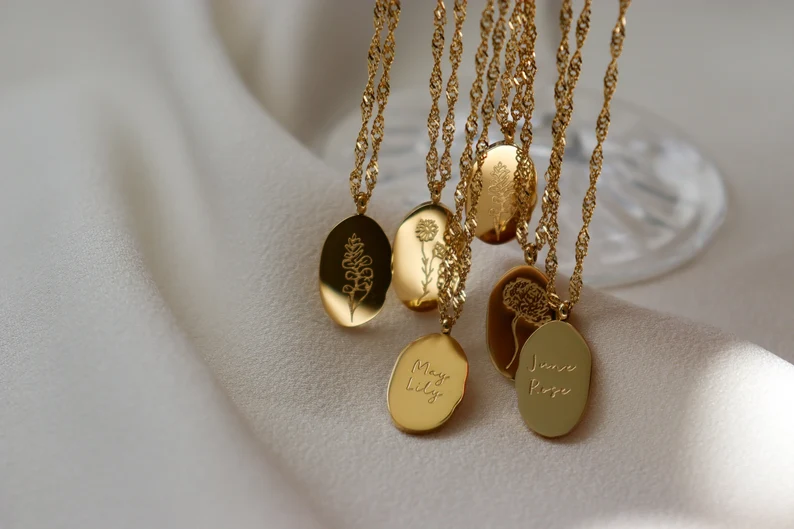
Gold-filled jewelry may sound like something similar to gold-plated jewelry but it’s far from it. The differences are not only in the amount of gold in the end product but even more so in the way gold-filled jewelry is made.
While it may sound like this type of jewelry is made by “filling” another metal with gold, it’s actually the opposite – a “sleeve” of gold is applied over (or filled with) another metal, as shown here. The other metal is typically brass, copper, or silver. That sleeve isn’t applied via electroplating, however, but through a purely mechanical method.
The process is simple – the base metal is pressed between two layers of gold or is covered from all sides with a golden sleeve. The whole piece is then heated and mechanically pressed through a roller several times until the gold and base metal have fully. The high heat partly melts the two metals so that they join better.
The other key difference between filled and plated gold is that here we are talking about much more gold overall.
Whereas with gold-plated jewelry, the plating makes up for no more than 0.05% of the end product, here the gold is expected to be about 5% of the jewelry piece – a hundred times more.
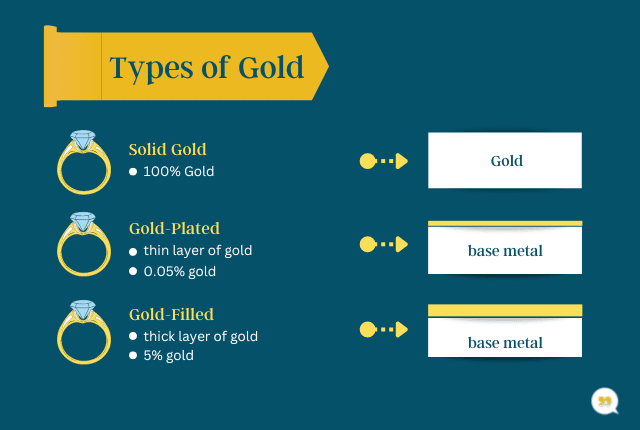
The presence of that much extra gold generally means two things:
- The overall value of the jewelry piece is much greater
- The top layer of gold is thick enough to not get scratched off as easily
The latter point is especially important because it makes gold-filled jewelry virtually indistinguishable from pure gold jewelry.
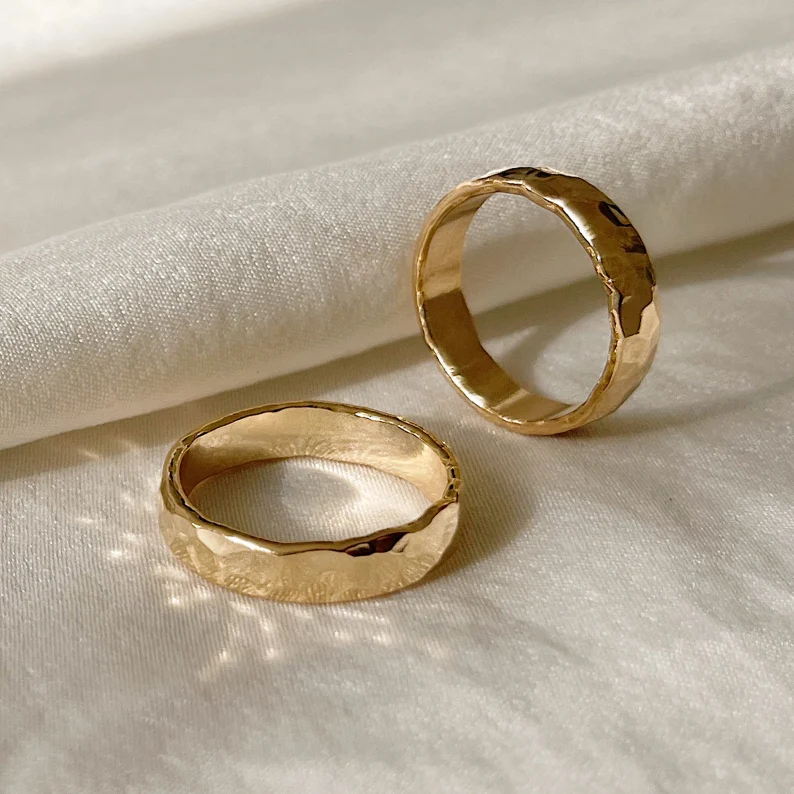
The top layer can be removed or damaged enough to reveal the brass or silver core, but this would have to be quite significant damage. In this sense, gold-filled and solid gold are very similar.
So, as long as you take as good care for your gold-filled jewelry as you do for your pure gold jewelry – both are likely to last you years, decades, or even multiple lifetimes.
As for the type of gold that can be utilized for gold-filled jewelry – the gold of any karatage can work, be it 9K, 10K, 14K, or 18K.
21 and even 24 Karats can also technically be used but the issue there is the same as with pure 21K and 24K gold – it’s too soft for the jewelry you want to wear regularly.
Is Rolled Gold the Same as Gold Filled?
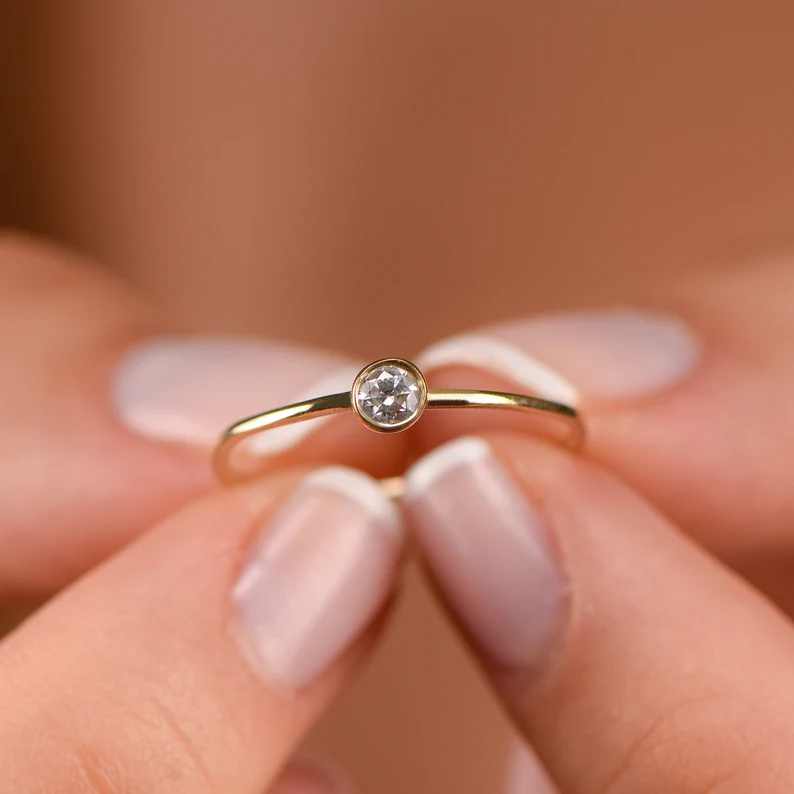
Rolled gold also deserves a mention here, just as vermeil did above. In this case, rolled gold can be seen as a variation of filled gold. However, whereas vermeil is a high-quality type of plated gold, rolled gold is a “lesser” variation of filled gold.
That’s because the process of making both rolled and filled gold is the same but rolled gold is done with x2 less gold overall. So, with it, you’d be getting only 2.5% gold in the end product instead of 5%. This not only makes rolled gold less valuable but also more likely that the gold layer will get scratched off and will reveal the brass or silver underneath.
With proper care, rolled gold can also last for years and decades – much more than vermeil or plated gold – but filled gold is simply the better option.
Pros And Cons of Gold Filled Jewelry
Let’s quickly go over the pros and cons of filled gold – and, to a lesser extent, of rolled gold – here, to summarize everything above:
Pros:
- The gold is bonded mechanically to the base metal in a very secure way with no risk of “falling off”
- The layer of gold on top of the brass or silver base is so thick that, unless you go out of your way to scratch it off, it will last a lifetime
- Filled gold looks just as pure gold of the same karatage as it basically is – the base metal underneath isn’t meant to be seen and doesn’t affect the beauty of the gold layered over it in any way
- The presence of so much gold – 5% of the overall jewelry piece – makes this type of jewelry much more valuable than plated gold, vermeil, or rolled gold
- While visually indistinguishable from pure gold, filled gold is much more affordable. 5% gold basically means a little over 1 Karat (1/24th)
Cons:
- Filled gold can be harder to find than plated gold or vermeil as fewer jewelers offer it
- While it looks just as pure gold, filled gold is less valuable and therefore not as prestigious if that’s what you’re looking for in a jewelry piece
Main Differences Between Gold Plated vs. Gold Filled Jewelry
In essence, the big difference to take away from the gold-plated vs gold-filled jewelry comparison is the thickness of the gold layer on top of the brass or silver base. Gold-filled jewelry has about x100 more gold than plated gold – this makes it both more valuable and much more long-lasting.
So, while it’s fair to say that plated gold is “low-quality” or “not really gold”, the same can’t really be said about filled gold as its top layer of gold is so thick that it looks just as pure gold and can last just as long.
Which Should I Choose?
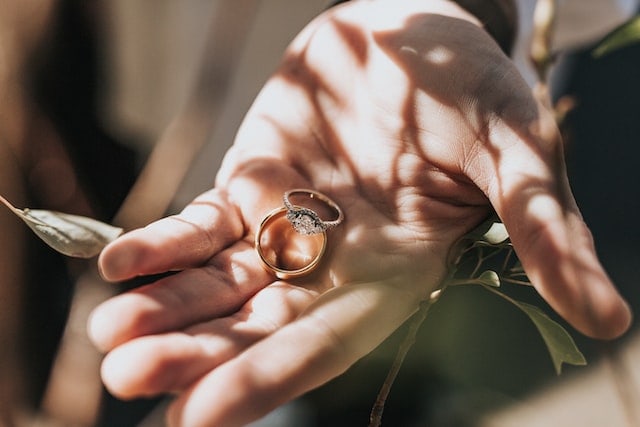
All of the above can make gold-plated jewelry sound worthless, pointless, or “fake” but that’s not the case. Gold-plated jewelry has its place and uses, namely as showcase pieces, as low-cost single-use cosplay jewelry pieces, or as short-term trendy jewelry.
For any jewelry piece, you want to wear long-term, and you want to last, however, filled gold – or at least rolled gold – is the way to go. Having said that, solid gold in all its varieties is the best option if your budget can stretch that far.
Wrapping Up
Overall, both plated gold and filled gold are described as “gold alternatives”. That is technically accurate, of course, but it can be seen as a tad unfair for filled gold as it is much closer to pure gold for all practical purposes than it is to plate gold.
Both pure gold and filled gold look the same, feel the same, and can last just as long with the same care – the only difference is that one is technically more valuable and “prestigious”. Plated gold, on the other hand, is drastically different as it just doesn’t serve the same purpose.









